Flight Buzz
The Sabre: Hypersonic Plane Could Revolutionize Tourism with One Hour Flights from London to New York
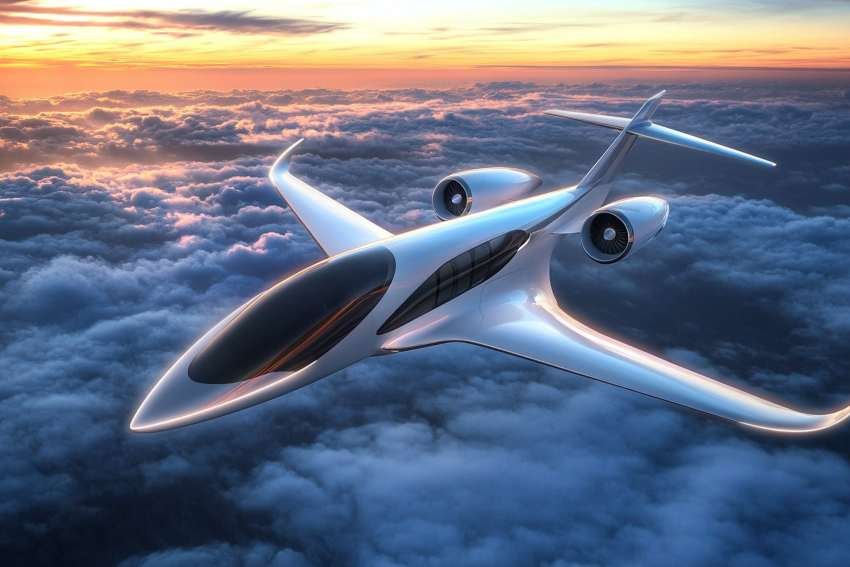
Sunday, July 27, 2025
Red swap Icon – black travel across the world where time means the most valuable of assets — a revolution in interconnected international travel has made its connections. The Sabre, a hypersonic plane under development in the U.K., would reduce the time of the flight between London and New York to an hour from the current seven. What is already a super-sonic achievement also has the potential to change the face of the tourism industry if it means cutting down the time it takes to cross the Atlantic. The plane, poised to hit speeds of Mach 5 (five times the speed of sound), is being developed as part of the European Space Agency’s (ESA) Invictus programme, with a planned flight demonstration scheduled for 2031. Exciting as the news is, this leads to pondering on what the tourist industry is going to do in light of this major shift in traveling behavior.
Changing the times of travel and the dynamics of tourism
Few among travelers, business people and the aviation sector haven’t dreamed for decades of shortening the duration of flights between two of the world’s most-visited cities, London and New York. These cities are connected by commercial flights today in about 7 hours, but with the Sabre, that travel time can be significantly reduced to only 1 hour. This has profound implications for the international tourism industry. A cut in flight time of that level won’t just make international travel faster—it will make it easier.
Tourism is based upon the same convenience, and long flights tend to keep tourists apart from one another in terms of geography. Many travellers from Europe, for example, are put off by the long flight times to the US, just as American travellers take a similarly dim view of a trip to Europe. By blanketing the ocean, the Sabre would make it possible for people to travel across the Atlantic for a more convenient day trip, supporting a greater number of one-day pleasure trips rather than long-stay commitments, and injecting money into the New York and London economies.
Reviving International Tourism: Is a New Travel Trend Emerging?
Perhaps the most important thing the Sabre can do for tourism is to make last minute international travel for short periods more possible for more people. Today, long-haul flights are considered a significant commitment of time and resources. Ordinary New York–London travel is seven hours’ flight travel time plus extra hours for check-in, security, and other non-stroll-on-the-grass necessities. Shrinking that time to a mere hour means a visit from the average tourist — for a day or a weekend or even one business meeting — is never more than a few hours of travel away.
And reduced transit time might encourage a surge in weekend travel, as tourists could more easily hop between cities. Let’s say, for example, the New Yorker starts taking spur-of-the-moment weekend trips to London or the other way around. This could mean a good opportunity for cultural interchange between two great cities and their periphery. It might also make it so other cities can benefit from shortened travel windows, with the potential for travelers to more effortlessly pop on a hypersonic plane to take in several destinations as part of the same travel package, bringing international travel within the reach of a whole new group of travelers and would-be travelers.
Economic Effects: The Rise of Hypersonic Tourism
The arrival of the Sabre could unlock new opportunities for businesses in the tourism industry. As flights are reduced, the luxury of high-speed travel may grow in popularity, similar to the way premium class seats on hypersonic jets, as well as for private charters and more customized travel plans. London and New York airports could also experience an influx in passenger numbers, lured by the one-hour flight.
A hypersonic tourism boom could, however, come with challenges. It could have a dramatic impact on existing transportation modes, like long-haul commercial flights. Airlines that currently dominate the transatlantic sector would find their territory challenged by hypersonic jets, and would be forced to innovate and cut costs in order to stay competitive. This may lead to cheaper flights for passengers, driving even more accessibility to the world of travel. But the cost of running hypersonic jets could be higher at first, meaning tickets may be more expensive in the near term.
In addition, since people can travel more quickly now, visit-och-place-h. new ways— The advent of more efficient travel options could mean tourists want more out of their destinations, and cities would have to offer higher-quality experiences in less time. Tourist areas could be overrun with visitors over shorter duration even as demand for lodging, dining and services peak. This is great news for tourism, but it also means you need to have the infrastructure in place so you don´t end up trashing the town!
Technological Innovation and Sustainability of Hypersonic Transportation
In addition to the speed, the Sabre’s novel technology might also change air travel in more far-reaching ways. The plane has advanced cryogenic technology that allows it to handle the high temperatures produced by hypersonic flight. The cooling system, which rapidly cools the air rushing into the engine to reduce engine temperatures, is critical to keeping the aircraft flying in a state of readiness that could exceed 4,000 miles an hour.
These types of technology have potential to lead to even more developments in aviation. As a leap forward, the Sabre itself is promising, but other countries and companies are also developing hypersonic aircraft. This push and pull of competition in the still nascent industry might mean an ever faster and greener airplane in the works. As these advances continue, we could very well see a more sustainable mode of long-distance travel that would make air travel’s carbon footprint a thing of the past!
Obstacles to overcome: High cost, and safety issues
But there are still a few hurdles to clear before the Sabre becomes a commercial reality. Cost is one of the biggest obstacles. The aircraft is believed to cost around GBP 6 billion to develop and, though the technology promises much, it may be years before it becomes commercially viable. Safety, too, is a big issue, for such aircraft undergo tremendous friction and thermal strain. The cryogenic pre-cooler system, developed for Sabre, is fundamental to the engines, but the extended life reliability of this now fundamentally validated technology has to be demonstrated when at the ready to bear the continual day in day out use of commercial aviation.
Meanwhile, the environmental impact of doing so is still poorly understood. Faster travel also could mean less fuel used per trip, but the vast amount of energy such high speeds requires could mitigate that gain, the report found. But there will be a need for even more disruption if the Sabre is to be a viable form of sustenance for people who do not want to ride a camel.
A New Era for Global Tourism
Looking to the future, this hypersonic Sabre jet is ushering in a new age of international travel. The Sabre’s ability to revolutionize air travel, by cutting down travel time and allowing for spontaneous international trips, as well as luxury travel at high speeds, is truly mind blowing. The next 10 years will be critical to whether this technology can make good on its promises and to whether it will be accessible to more than just the premier travelers.
As it stands, the future of hypersonic travel is just over the horizon. But as the engineering, innovation and infrastructure keeps advancing, the Sabre may one day change the face of tourism, connecting cities, cultures and economies at the speed of sound.
Flight Buzz
Lufthansa Cancels Over Forty New Flights Across Europe, Stranding Travelers on Major Routes Including Frankfurt, Munich, Berlin and London
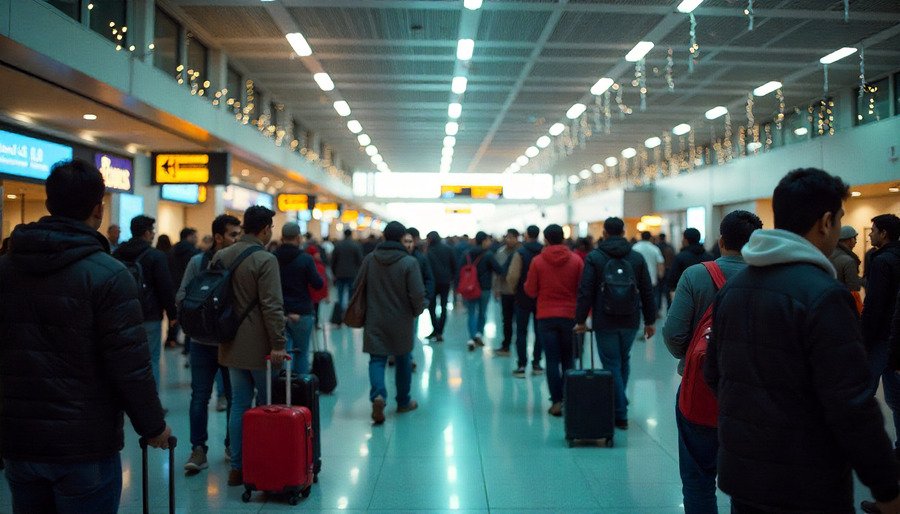
Sunday, July 27, 2025
Lufthansa cancelled over forty flights across Europe, leaving passengers on major routes locked out of flights from a variety of major cities including Frankfurt to Munich, Berlin and London, among others. The cancellations, which have upended air travel on some of the most traveled routes in Europe, were due to unforeseen operational challenges that were out of the company’s hands, like bad weather. In the wake of these cancellations, affected passengers are now left to deal with the unknown and face long waits, and many are now scrambling to replace their disrupted travel plans.
Severe weather has caused significant disruptions to Lufthansa’s operations, resulting in the cancellation of 44 flights with is around 4% of schedules and delays for 139 others, impacting 14% of its scheduled routes. Major routes like Frankfurt to Munich, Berlin to Frankfurt, and London to Frankfurt were among the hardest hit. The adverse conditions, including storms and low visibility, have left many travelers stranded across Europe, particularly on high-demand connections such as Zurich, Bologna, and Berlin. While Lufthansa is working to accommodate affected passengers with rebooking and compensation options, the chaos is expected to continue for the next few days as operational delays ripple through the airline’s network. Travelers are advised to regularly check their flight status and reach out to customer service for assistance.
Affected Routes and Cities
The cancellations have affected some of Lufthansa’s busiest and most crucial routes, causing chaos at airports across Europe. The following are some of the key routes that have been canceled or delayed:
- Frankfurt to Munich (DLH102, DLH108) – Multiple flights between these two major hubs have been canceled, leaving travelers unable to connect to further destinations.
- Munich to Frankfurt (DLH101, DLH107) – Flights between Munich and Frankfurt are some of the most highly traveled in Europe, and their cancellations are expected to have widespread impacts on other connections.
- Berlin to Frankfurt (DLH189, DLH199) – Cancellations on these routes have disrupted business and leisure travelers alike, particularly those with connecting flights in Frankfurt.
- Frankfurt to London (DLH916, DLH917) – Affected flights between Frankfurt and London Heathrow have left passengers scrambling for alternate transport options.
- Frankfurt to Zurich, Bologna, and Milan (DLH1196, DLH288, DLH254) – Passengers flying to destinations in Southern Europe have faced similar delays and cancellations.
- Frankfurt to Amsterdam (DLH998) – This route, commonly used by international travelers, has been another major casualty in the recent wave of disruptions.
The impact of these cancellations has been widespread, with many travelers stuck at airports or facing hours-long delays. Passengers were left confused and frustrated as their flight plans were disrupted, especially during peak travel hours.
Operational Challenges Beyond Lufthansa’s Control
While Lufthansa has been the focus of many complaints, it is important to note that the cancellations were not a direct result of the airline’s decisions. Adverse weather conditions, which have been affecting Europe over the past few days, are largely to blame. Storms, heavy winds, and low visibility have led to air traffic restrictions, particularly in northern and central Europe. These conditions have made it difficult for Lufthansa to operate flights safely, leading to these widespread cancellations.
Additionally, Lufthansa has mentioned operational issues, which could include staffing shortages and logistical challenges related to the weather. While the airline is doing its best to assist passengers, the backlog of cancellations is creating a ripple effect throughout its network.
Passenger Assistance and Compensation
For travelers affected by the cancellations, Lufthansa is advising passengers to check the status of their flights regularly. The airline has updated its flight tracking system to allow passengers to easily find out if their flight is impacted. Passengers are also encouraged to reach out to Lufthansa’s customer service team for assistance with rebooking options, or for any questions regarding compensation or other alternatives.
Travelers whose flights have been canceled due to extraordinary circumstances, such as severe weather, may not be entitled to compensation under EU regulations. However, Lufthansa has stated that it will offer meal vouchers, overnight accommodation, and rebooking on the next available flights where possible. In cases where delays are over three hours, compensation may be available in line with EU flight delay regulations, depending on the situation.
Travel Tips for Affected Passengers
If you are affected by the cancellations, here are some tips to help you navigate the disruption:
- Check Flight Status Regularly: It’s crucial to stay updated on your flight’s status, especially in case of last-minute changes. Use Lufthansa’s mobile app or website for real-time flight information.
- Contact Lufthansa Customer Service: For assistance with rebooking your flight or finding alternative travel options, reach out to Lufthansa’s customer service as soon as possible. Many travelers are facing long wait times, so be prepared for delays in getting assistance.
- Understand Your Rights: Know that if your flight is canceled due to weather, Lufthansa may not be legally obligated to offer compensation. However, they will offer alternative transportation and, where applicable, food, accommodation, and rebooking services.
- Consider Alternative Transportation: If your rebooking with Lufthansa is not suitable or takes a long time, consider other travel options such as trains or buses, especially for shorter routes.
- Stay Calm and Patient: Travel disruptions can be stressful, but staying calm and informed will make the experience easier. Allow extra time at the airport for security checks, and be ready for possible longer wait times.
Lufthansa has canceled over forty flights across Europe, stranding travelers on major routes like Frankfurt, Munich, Berlin, and London, due to severe weather conditions disrupting air traffic. The cancellations have left passengers scrambling for alternative arrangements as operations are delayed across the continent.
The Road Ahead for Air Travel in Europe
The disruption of these over forty Lufthansa flights highlights the fragility of air travel in the face of unpredictable weather. With Europe’s air traffic volume steadily increasing as summer travel picks up, it’s likely that passengers will experience further delays or cancellations over the coming days. While Lufthansa is taking steps to alleviate the backlog, the ripple effect from this round of cancellations is expected to be felt for some time.
Travelers planning to fly in the next few days are encouraged to keep an eye on their flight status and to make sure they have contingency plans in place in case of further disruptions. With the airline industry still recovering from the pandemic and facing increasing demand, these challenges may persist as weather patterns and staffing shortages continue to impact operations.
Flight Buzz
Moscow Pyongyang Flights Resume After Three Decades
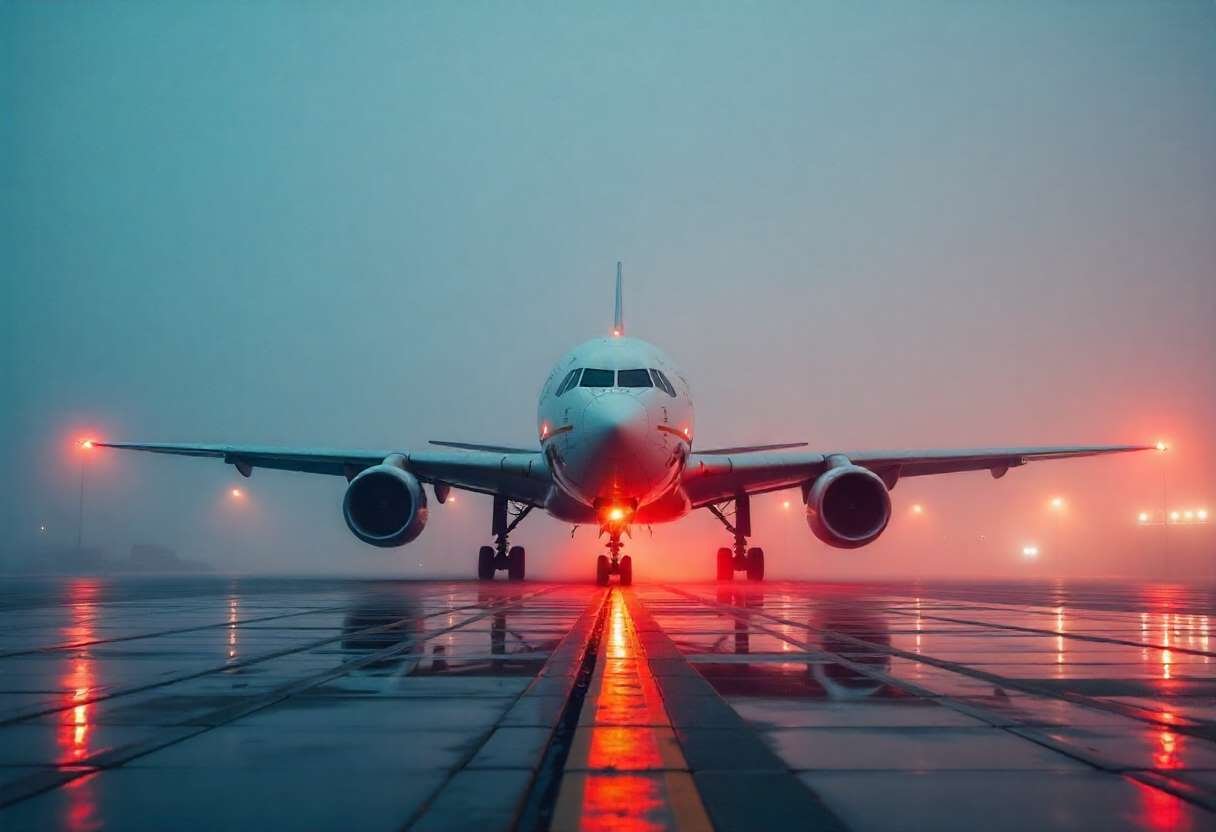
Sunday, July 27, 2025
Russia is preparing to resume direct passenger flights between Moscow and Pyongyang, after thirty years. This historic resumption reflects an intensifying strategic alliance and may subtly influence regional transit flows in Southeast Asia including travel patterns involving Thailand.
Government-Confirmed Flight Approval
The Ministry of Transport of the Russian Federation officially announced that flights will commence on July 27, 2025. The flights will operate monthly initially, with possible expansion to twice weekly based on demand. The aircraft is expected to be a Boeing 777‑200ER with a seating capacity of 440 passengers for the eight‑hour journey.
Russia’s civil aviation authority Rosaviatsia granted permission to Nordwind Airlines to operate the route. The transport ministry confirmed that, although monthly at first, the flights are designed to build demand before increasing frequency.
Rail Revival and Broader Transport Links
Complementing the flight resumption, Russian Railways restored an eight-day passenger train service between Moscow and Pyongyang, making it one of the longest direct train journeys in the world. This rail link complements air travel, symbolizing deepening transport integration.
Strategic and Diplomatic Context
These developments come against the backdrop of Russia-North Korea rapprochement under a Comprehensive Strategic Partnership Treaty signed in June 2024, which enshrined cooperation across political, security, and cultural domains . Russia’s Security Council Secretary Sergei Shoigu confirmed at a Moscow press briefing that regular flights will resume after more than three decades of absence.
Implications for Regional Transit and Tourism
Although the route links two distant capitals, the ripples extend into Southeast Asia. Thailand’s tourism industry—particularly its gateways like Bangkok, Phuket, and Chiang Mai—often depends on connecting traffic through transit hubs like Doha, Dubai, Singapore, Kuala Lumpur, and even European nodes. While Russia–North Korea flights may not directly involve Thailand, shifts in global aviation networks can influence how multi‑leg itineraries are planned.
Thailand’s tourism authorities have previously observed that diversions or new routes in distant regions may shift traffic away from traditional stopover cities in Asia. For example, Russian or DPRK tourists may adjust global routing in future itineraries, subtly influencing inbound flows in Thailand via alternate hubs.
Human Angle: Enhancing Connectivity, Easing Barriers
For ordinary travellers—especially Russian citizens—it means new access to North Korea without relying on indirect transit via Vladivostok or charter flights. For tourism boards and travel agents, increasing route options signals changing planning needs. Across thousands of kilometers, the tourism ecosystem—including Thailand’s inbound segment—must stay alert to shifts that affect connection choices for Asian and Russian tourists.
Looking Ahead: Growth and Monitoring
As Nordwind Airlines builds up passenger frequency, Russian and North Korean transport authorities will evaluate demand. If flights become bimonthly or weekly, more regular logistics and visa facilitation could follow.
Thailand’s Tourism Authority and Ministry of Tourism & Sports will closely monitor these developments. If Russia–North Korea connectivity increases, travel patterns—especially those involving Russian tourists touring Asia—might reconfigure itineraries and stopover flows that skirt traditional Southeast Asian nodes.
Conclusion
In simple terms: Russia is restarting direct Moscow–Pyongyang passenger flights on July 27, 2025, after a break of over three decades. The move is part of deepening strategic ties and broader transport reintegration. Though Thailand isn’t a direct destination, its tourism sector may feel subtle shifts via global transit realignments as travel routes evolve. For everyday travellers and global tourism planners alike, this marks a significant shift in cross-border connectivity.
Flight Buzz
Batik Air Ends Kuala Lumpur–Amritsar Flights

Sunday, July 27, 2025
Batik Air Malaysia has officially terminated its Kuala Lumpur–Amritsar service. As part of broader safety-driven route restructuring, the airline is also adjusting flight operations which may ripple into Thailand’s tourism sector through transit disruptions.
The first paragraph is straightforward and personal: passengers traveling via Kuala Lumpur to Thailand may now find fewer connections available. This unexpected route change adds to travel uncertainty even for those not directly flying to India.
Network Reconfiguration: What Changed and Why
In coordination with government aviation oversight, Batik Air has begun rerouting or cancelling selected services linked to the suspended destinations. Official statements emphasize safety as the top priority and confirm continued close monitoring of regional developments.
While passengers affected by the route suspension are being offered refunds or travel rebooking options, Batik Air is also reshaping its schedule. Certain long-haul flights by Malaysia Airlines such as London and Paris routes have been diverted via Doha for fuel and clearance, showing regional airlines’ broader strategy when primary airspace becomes restricted.
Travel Habits and Transit Confidence Affected
Kuala Lumpur International Airport serves as a major hub feeding international tourism flows—including to Bangkok, Phuket, Chiang Mai, and other Thai destinations. With fewer Indian transit passengers passing through KLIA, tourism operators in Thailand are noting subtle changes in booking behavior.
Thai travel agents sharing multi-leg itineraries (e.g. India → Malaysia → Thailand) report cancellations or route changes, impacting package tours that rely on KL stopovers. Thailand’s Tourism Authority and Ministry of Tourism & Sports have in the past acknowledged how disruptions in regional connectivity may indirectly reduce arrivals, even if tourism to Thailand itself remains unaffected.
Thailand Tourism: Indirect But Noticeable Effects
Although Thailand is not the affected destination, its tourism sector may still feel the impact indirectly. Malaysia acts as a major symlink for travelers from South Asia into Southeast Asia. With fewer transit passengers arriving via Kuala Lumpur to hop on onward flights to Bangkok, Thailand-bound group tours and individual itineraries are being reshuffled.
Tour operators in Bangkok and Phuket indicate they are watching connectivity trends closely. Trip planners and multi-destination packages that included KL stopovers must now pivot—either shifting to direct India–Thailand flights, air carriers from other hubs, or using alternate routing. This logistical rebooking could result in slight drop-offs in passenger numbers or higher costs for travelers.
Future Outlook: Regional Flexibility and Planning
With geopolitical tensions prompting route disruptions, airlines like Batik Air must maintain agility. The changes also highlight how dependent travel ecosystems are on well-functioning transit hubs. Thailand’s tourism bodies may need to prioritize diversifying source markets and strengthening direct connectivity—for example with Indian and South Asian carriers—to offset reliance on transits through Malaysia.
As Batik Air phases out its Kuala Lumpur–Amritsar leg, it also appears to be focusing on stabilizing its network elsewhere. According to aero routes reporting, other routes—including services to Thailand itself remain active, though the overall network is being pruned in light of operational and geopolitical shifts.
Conclusion
Batik Air has ended its Kuala Lumpur–Amritsar service due to regional security issues, restructured its flight network, and is assisting affected passengers with rerouting or refunds. Even though Thailand isn’t the direct focus of these flight changes, travel flows through Kuala Lumpur may see a decline, indirectly affecting inbound tourism to Thailand. Regional aviation authorities and tourism agencies are monitoring developments, seeking to maintain seamless travel through Southeast Asia amidst evolving geopolitical realities.
-

 Brand Stories6 days ago
Brand Stories6 days agoBloom Hotels: A Modern Vision of Hospitality Redefining Travel
-

 Brand Stories1 day ago
Brand Stories1 day agoCheQin.ai sets a new standard for hotel booking with its AI capabilities: empowering travellers to bargain, choose the best, and book with clarity.
-

 Destinations & Things To Do7 days ago
Destinations & Things To Do7 days agoUntouched Destinations: Stunning Hidden Gems You Must Visit
-

 AI in Travel7 days ago
AI in Travel7 days agoAI Travel Revolution: Must-Have Guide to the Best Experience
-

 Brand Stories3 weeks ago
Brand Stories3 weeks agoVoice AI Startup ElevenLabs Plans to Add Hubs Around the World
-

 Brand Stories2 weeks ago
Brand Stories2 weeks agoHow Elon Musk’s rogue Grok chatbot became a cautionary AI tale
-

 Destinations & Things To Do1 day ago
Destinations & Things To Do1 day agoThis Hidden Beach in India Glows at Night-But Only in One Secret Season
-

 Asia Travel Pulse3 weeks ago
Asia Travel Pulse3 weeks agoLooking For Adventure In Asia? Here Are 7 Epic Destinations You Need To Experience At Least Once – Zee News
-

 AI in Travel3 weeks ago
AI in Travel3 weeks ago‘Will AI take my job?’ A trip to a Beijing fortune-telling bar to see what lies ahead | China
-

 Brand Stories3 weeks ago
Brand Stories3 weeks agoChatGPT — the last of the great romantics

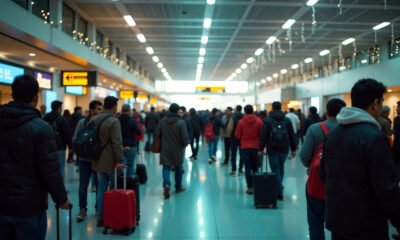

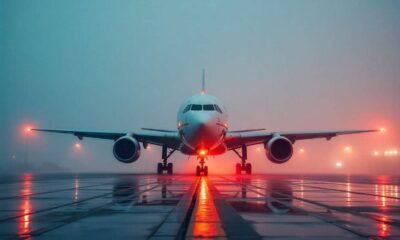

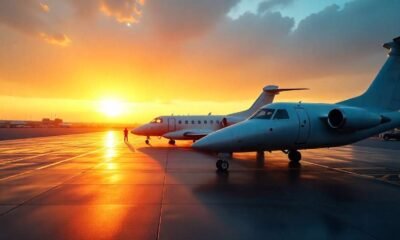

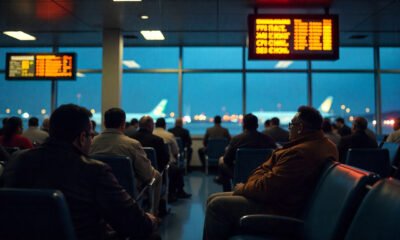

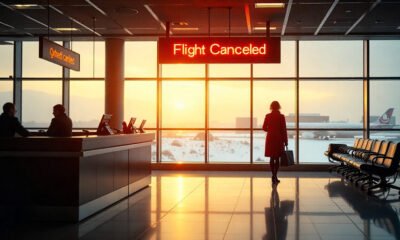



You must be logged in to post a comment Login